CARB Publishes Annual Report on California Climate Investments
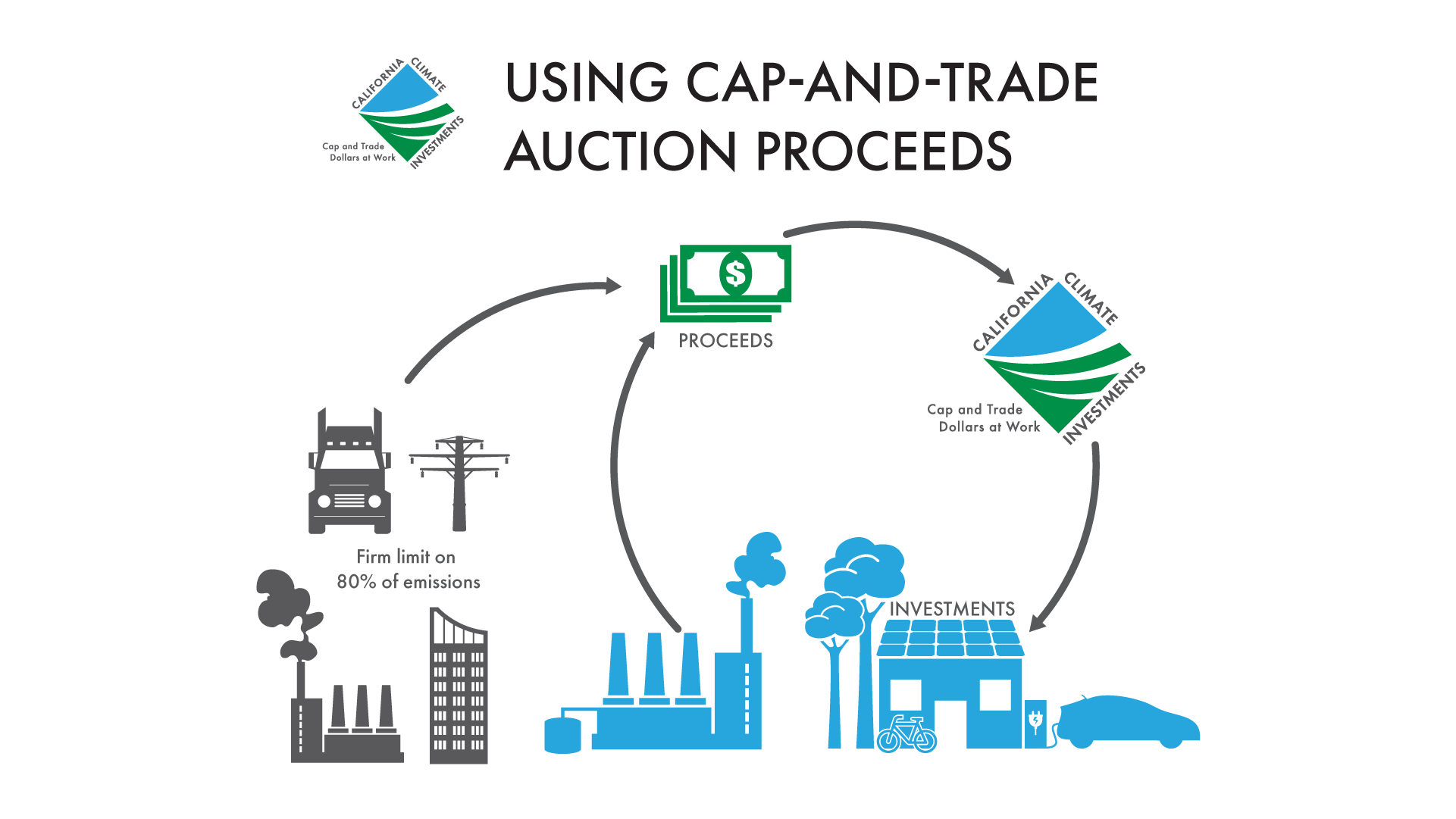
CARB Publishes Annual Report on California Climate Investments as Governor Newsom and California Legislature Seek Extension of Cap-and-Trade Program
May 7, 2025 –
Annual Report on California Climate Investments:
The California Air Resources Board (CARB) published its annual report on California Climate Investments using Cap-and-Trade proceeds. According to the report, nearly $33 billion has been raised from Cap-and-Trade to fund climate solutions in communities across the state; of this amount, $12.8 billion projects have been implemented under 117 programs administered by 27 agencies. Along with the report, CARB released a general fact sheet documenting cumulative project achievements through November 2024 including $1.5 billion invested in wildfire prevention, forest health and prescribed burning activities and 1.6 million acres of land conserved or restored.
Extension of Cap-and-Trade Program:
Prior to the report’s publication, Governor Newsom, Senate President pro Tempore McGuire and Assembly Speaker Rivas announced they will seek an extension of the Cap-and-Trade Program during this legislative year. The program is currently set to expire in 2030 and requires extension by the Legislature. As the Governor noted in his proposed budget, extending the program this year can provide the market with greater certainty, attract stable investment, further California’s climate leadership and set the state on a clear path to achieve its 2045 carbon-neutrality goal.
New Report On Effects of Forest Management on Carbon Storage
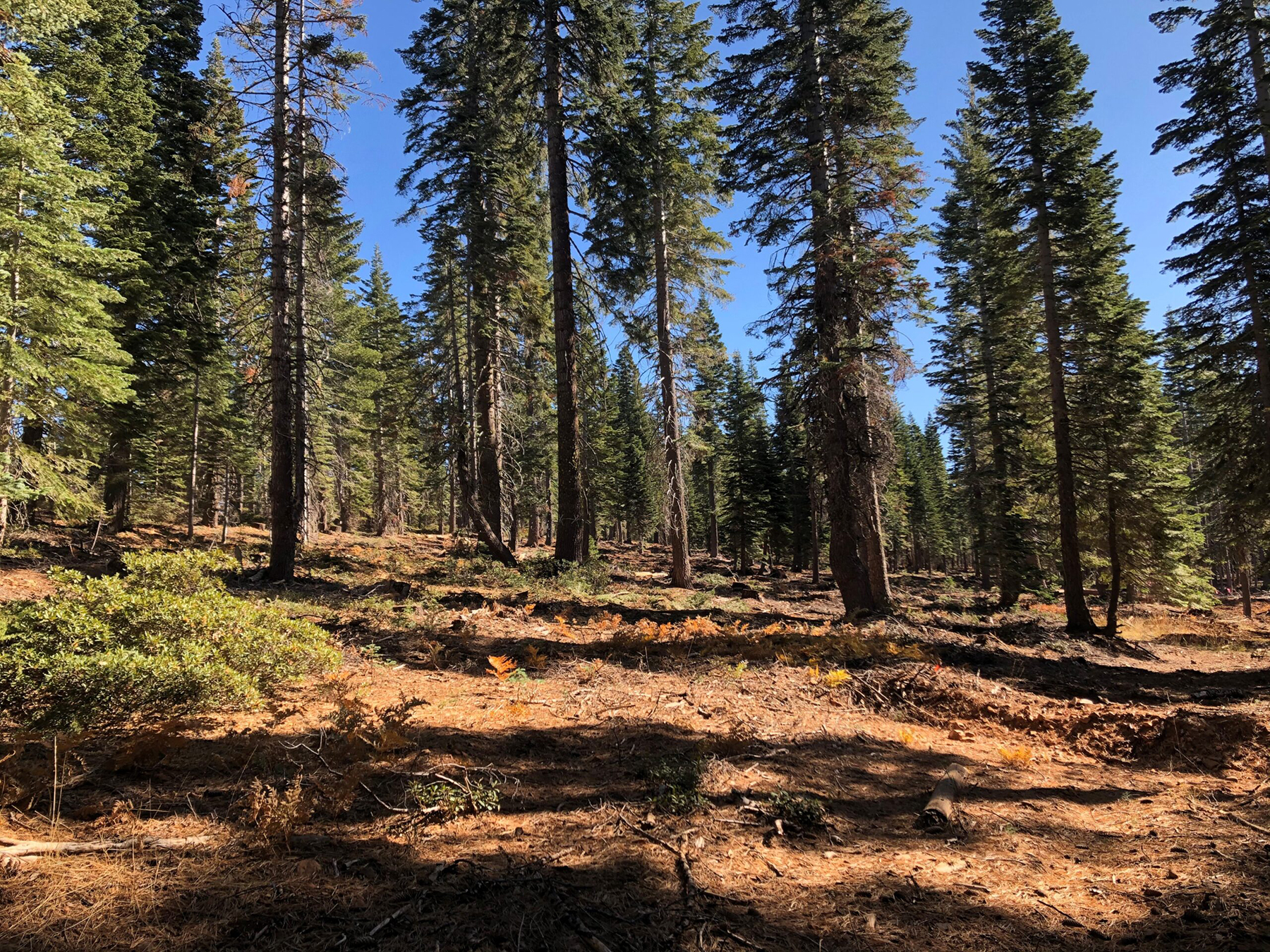
New Report on Effects of Forest Management on Carbon Storage in California
February 18, 2025 – American Forests, USFS, CAL FIRE, The Northern Institute of Applied Climate Science, and Michigan State University recently released a collaborative report on the effects of forest management and wood utilization on carbon sequestration and storage in California. The report provides comprehensive forest sector carbon modeling results, estimated treatment costs, wood product revenue, and wood processing capacity constraints for a broad range of forest management scenarios to help identify climate-smart forestry (CSF) practices. The modeling results provide information about forest climate mitigation and adaption opportunities that will be utilized to help inform the 2025 California Wildfire and Forest Resilience Task Force Action Plan
Notably, the report:
- Identifies 11 million acres in California as having high or very high wildfire hazard potential.
- Emphasizes the importance of wood utilization to improve carbon benefits.
- Predicts that under a business-as-usual scenario, California could lose up to up to 48% of forest area & 50% of forest carbon by 2071.
- Models scenarios that include a portfolio of actions that drastically reduce predicted losses to forest areas and forest carbon.
California Passes Proposition 4 — Providing $1.5 Billion for Wildfire Resilience
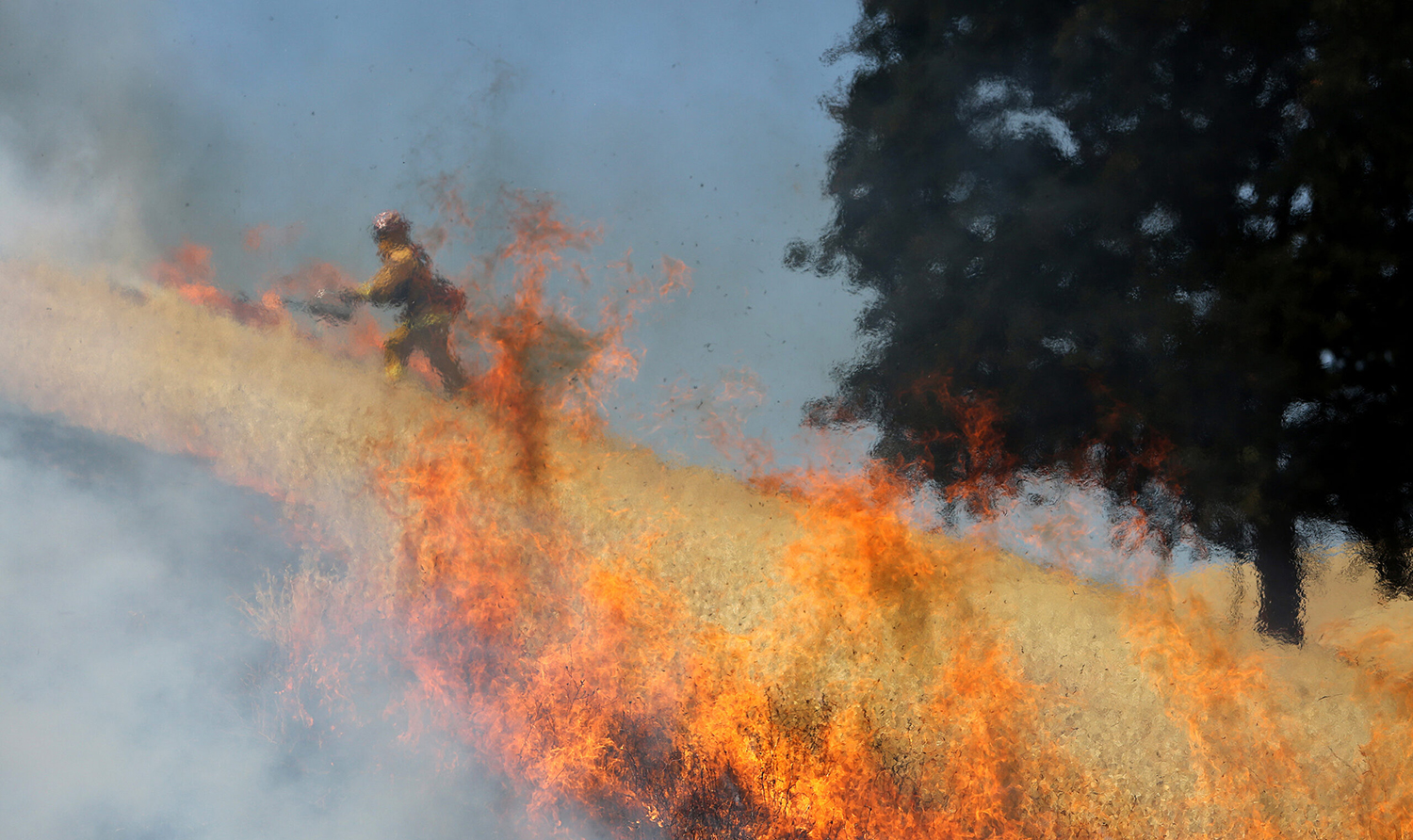
California Passes Proposition 4 — Providing $1.5 Billion for Wildfire Resilience
November 5, 2024 – Californians passed Proposition 4, the first-ever climate bond to go before California voters. The proposition provides $10 billion in bond funds for critical wildfire, flood protection, and other climate resilience projects around the state, including $1.5 billion for wildfire resilience. This funding will enable agencies to improve landscape health and resilience and protect communities from wildfire risks through programs such as the Regional Forest and Fire Capacity Program. The funding also includes $50 million for long-term capital infrastructure projects that utilize wildfire mitigation waste for non-combustible uses.
In addition to funding wildfire resilience, $1.2 billion will be used to protect natural lands and preserve biodiversity, with $870 million directed to the Wildlife Conservation Board to help the state to meet its goal to protect 30% of lands by 2030. The approval of Proposition 4 is a major advancement for California’s efforts to increase the pace and scale of wildfire and landscape resilience treatments, adapt to a changing climate, and reach goals set in the California’s Wildfire and Forest Resilience Action Plan.
CA State Parks and Partners Treat Over 900 Acres with Beneficial Fire
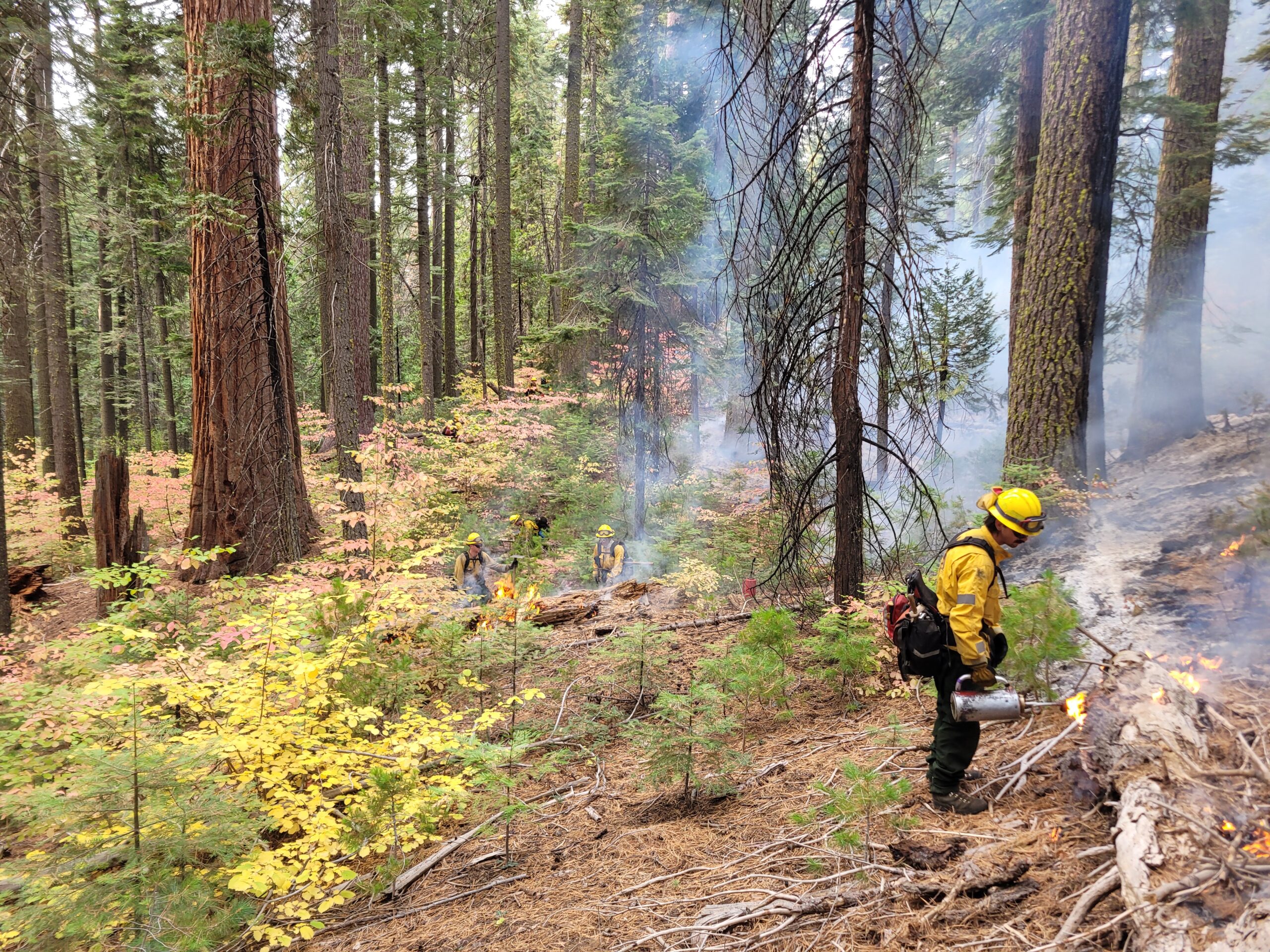
photo by: Richard Rappaport
CA State Parks and Partners Treat Over 900 Acres with Beneficial Fire
From October 29 to November 1, California State Parks with the assistance of CAL FIRE and the USFS treated 914 acres in the South Grove Natural Preserve at Calaveras Big Trees State Park with prescribed fire.
State Parks, CAL FIRE, USFS and contractors spent years organizing interagency collaboration and preparing the perimeter along with the giant sequoia trees for beneficial fire. Preparation included using mechanical treatments appropriate for State Parks Natural Preserves to remove large fuels from the surrounding fire road and using hand tools to remove large material from the base of over 700 mature giant sequoias.
The entire South Grove Natural Preserve is over 1,300 acres. Critical to giant sequoia stewardship and regeneration, State Parks will continue to be prepared to treat the remaining acres and bring fire back to the entire landscape in regular intervals. This project restores and maintains a complex forest community, promotes giant sequoia regeneration and wildfire resilience, reduces hazardous fuel loads, improves wildlife habitat, and protects park infrastructure.
California Protects 11,000 Acres of the Upper Trinity River Watershed

California Protects 11,000 Acres of the Upper Trinity River Watershed
August 5, 2024 – Pacific Forest Trust has purchased 11,000 acres of the Upper Trinity River watershed from a timber company and transferred it to the Watershed Research and Training Center as a conservation easement. This marks a major step in the state’s efforts to safeguard vital water resources, protect biodiversity, and conserve ecologically important landscapes.
The purchase was funded by state and federal agencies, including support from the Wildlife Conservation Board and the Sierra Nevada Conservancy. The easement aligns with Task Force goals by assuring the property will be managed to mitigate extreme wildfire risk. It also demonstrates the critical intersection between efforts to promote wildfire resilience with enhancements of watersheds, wildlife habitats, as well as recreation and economic opportunities.
New Conservation Strategy to Protect Montane Forests in Southern California
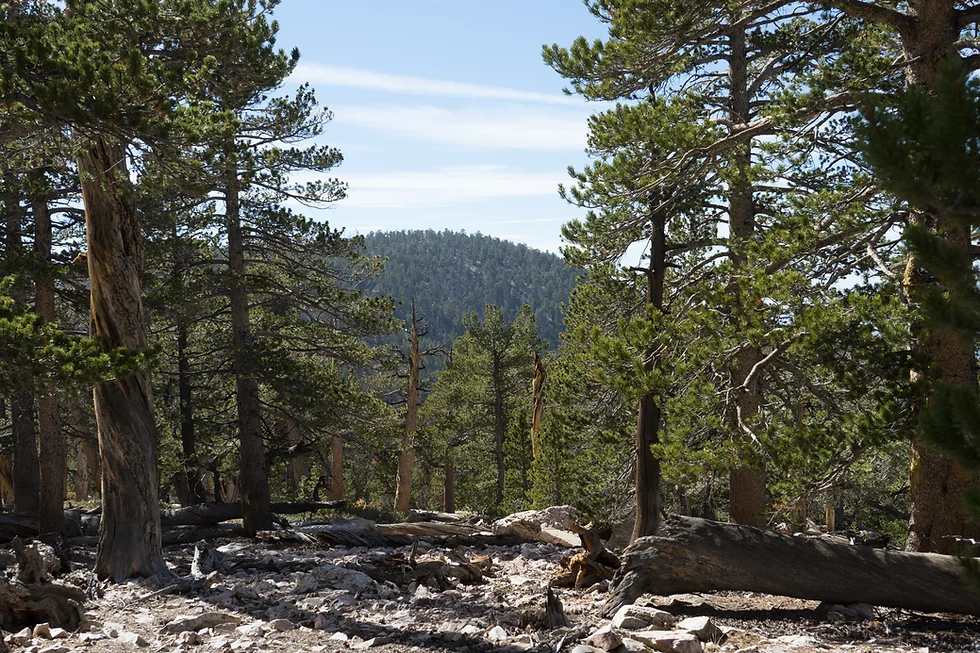
New Conservation Strategy to Protect Montane Forests in Southern California
July 30, 2024 – The Southern Montane Forest Project released its Climate-Adapted Conservation Strategy, an initiative that will bolster the resilience of montane (i.e. higher-elevation forests) to confront threats from wildfires, droughts, pollution, and invasive species.
The strategy takes an all-lands approach, calling for state, federal, academic, and non-profit efforts to work in concert within the USFS’s Southern California Wildfire Crisis Landscape.
Southern California’s montane forests are a key Task Force priority because they protect watersheds that supply about 40% of downstream water for drinking and agriculture. They capture carbon, prevent soil erosion, and serve as critical habitats for threatened and endangered wildlife. They also supply Indigenous communities with food, fiber, and medicine while providing recreational opportunities to over 24 million people.
NFWF Announces 9 Large Watershed Planning Grants Totaling $53 Million for California National Forests

NFWF Announces 9 Large Watershed Planning Grants Totaling $53 Million for California National Forests
On June 24, the National Fish and Wildlife Foundation (NFWF) announced $53 million in grants to protect and restore forests and watersheds in California using voluntary, targeted headwater resilience planning and monitoring. The grants leverage $31.4 million in matching contributions, for a total conservation impact of $84.4 million. The awards were made possible by a first-of-its-kind agreement between the USDA Forest Service and NFWF. This effort pools multiple funding sources from public and private organizations to meet the level needed for effective landscape-scale projects to tackle California’s wildfire crisis.
Tahoe Conservancy Grant Supports Joint USFS-Washoe Tribe Project at Meeks Meadow
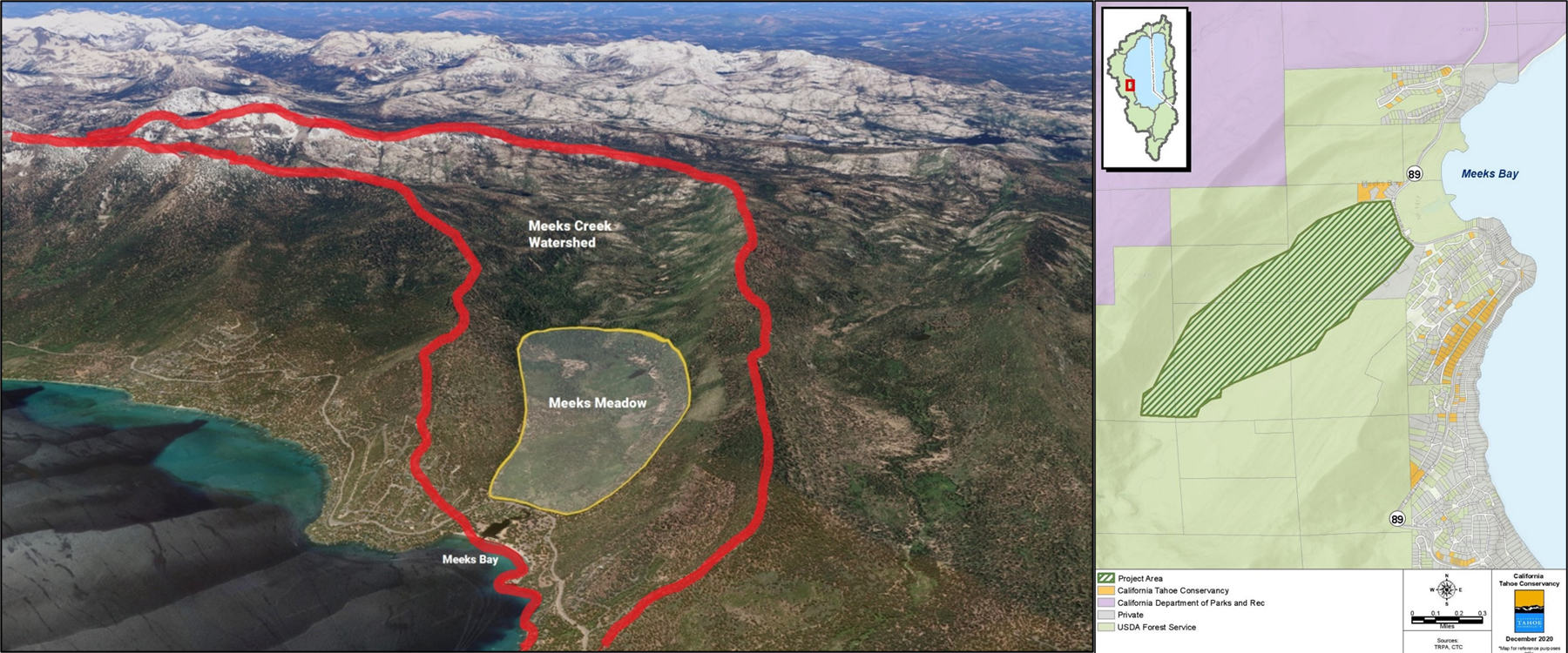
Tahoe Conservancy Awards $600,000 Grant to Support Joint USFS-Washoe Tribe Project at Máyala Wáta (Meeks Meadow)
The California Tahoe Conservancy has awarded a $600,000 grant to the USDA Forest Service Lake Tahoe Basin Management Unit (LTBMU) for forestry operations as part of its joint project with the Washoe Tribe of Nevada and California to restore Máyala Wáta (Meeks Meadow). The absence of low-intensity fire has allowed lodgepole pines to encroach on the meadow, drying the soils and reducing the availability of culturally significant plants. The LTBMU will use these funds, matched by $1 million in federal funds, to remove encroaching conifers from 213 acres of the meadow and thin 70 acres of the surrounding upland forest. This federal, state, and tribal partnership is an excellent example of how Task Force partners can work together to achieve multiple benefits, from improving wildlife habitat to promoting culturally significant plants.
CA Climate Hub Receives USFS Region 5 Partnership of the Year Award
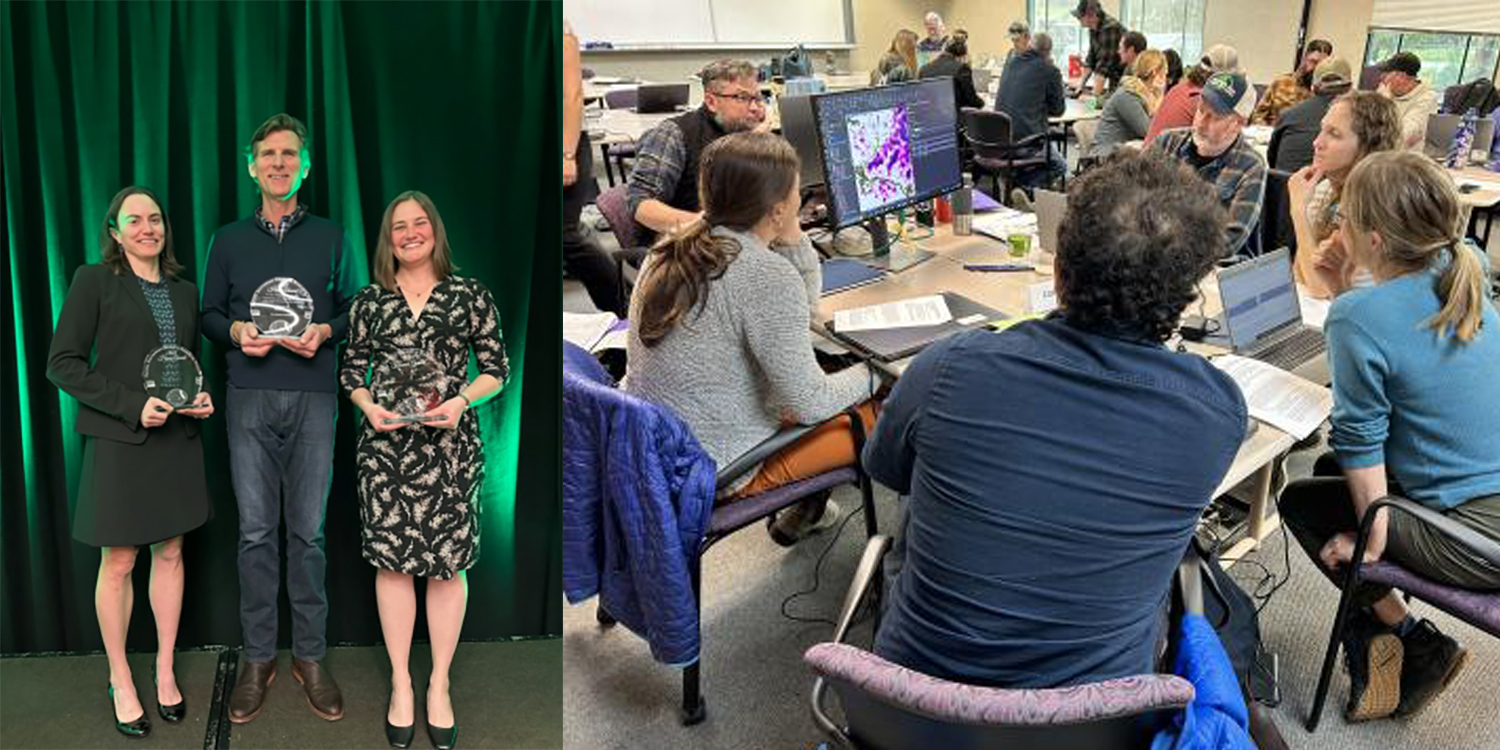
California Climate Hub Receives USFS Region 5 Partnership of the Year Award
The USDA Forest Service Region 5 awarded the California Climate Hub the 2023 Honor Award for Partnership of the Year for their efforts to develop and deliver climate literacy and web-based climate tools trainings. The trainings familiarized participants with relevant information on climate and climate models and provided hands-on experience using two web-based climate data tools: Cal-Adapt and Climate Toolbox. Additionally, the California Climate Hub has designed and delivered a series of workshops focused on the applications of the California Wildfire and Forest Resilience Task Force’s Regional Resource Kits. The most recent workshop gathered forest managers from local, state, and federal agencies at Shasta-Trinity National Forest in Redding.
USFS Invests $179M to Confront Wildfire Crisis
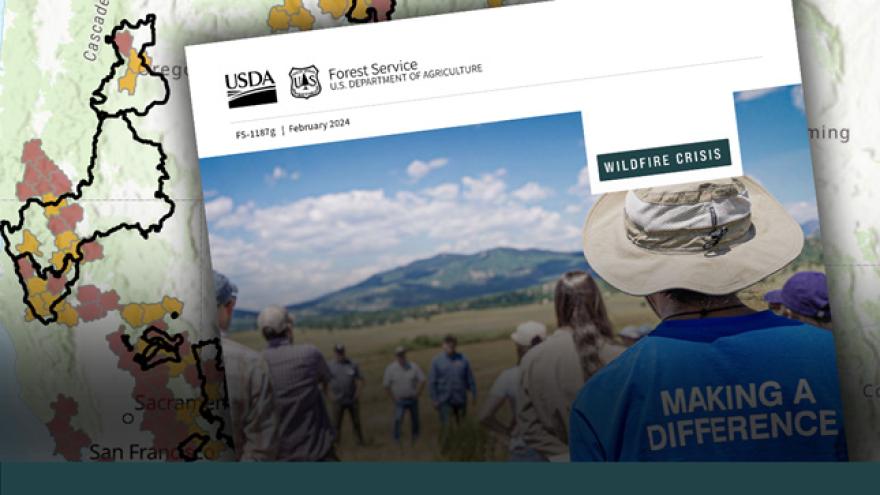
USDA Forest Service Invests Nearly $179 Million for Priority Landscapes in California to Confront Wildfire Crisis
On February 20, the USDA Forest Service announced it will invest nearly $179 million into priority landscapes across California as part of a $500 million national investment to expand work on the Wildfire Crisis Strategy to reduce risk to communities, critical infrastructure, and natural resources from the nation’s ongoing wildfire and climate crisis. This builds on the $2.8 billion already invested by Governor Newsom and California’s Legislature to take proactive actions to reduce catastrophic wildfire risks, protect communities, and restore the health of our landscapes.
“These and other federal investments are vital to match the Governor’s $2.8 billion investment over the last several years. They will also strengthen our partnership with the Forest Service, California’s largest landowner, in taking an ‘all-lands’ approach to improve the health of our forests and the safety of our communities,” said California Wildfire and Forest Resilience Task Force Director, Patrick Wright.
Funding has been designated for the following projects:
| Regional Landscapes | FY24 Allocation |
| Stanislaus | $57,663,352 |
| North Yuba | $16,489,560 |
| Sierra and Elko Fronts (includes CA & NV) | $27,692,340 |
| Klamath River Basin (includes CA & OR) | $36,831,090 |
| Plumas Community Protection | $3,522,500 |
| Southern California | $1,915,000 |
| Trinity | $34,749,886 |
| Total Allocation FY24: | $178,863,728 |
An additional $100 million will be allocated across 24 qualifying states under a new Forest Service program — the Collaborative Wildfire Risk Reduction Program which will expand work in high-risk wildfire areas outside the 21 priority landscapes. The Collaborative Wildfire Risk Reduction Program will use hazardous fuels funds from the Inflation Reduction Act to treat areas in other high-risk wildfire areas where national forests and grasslands meet homes and communities.

